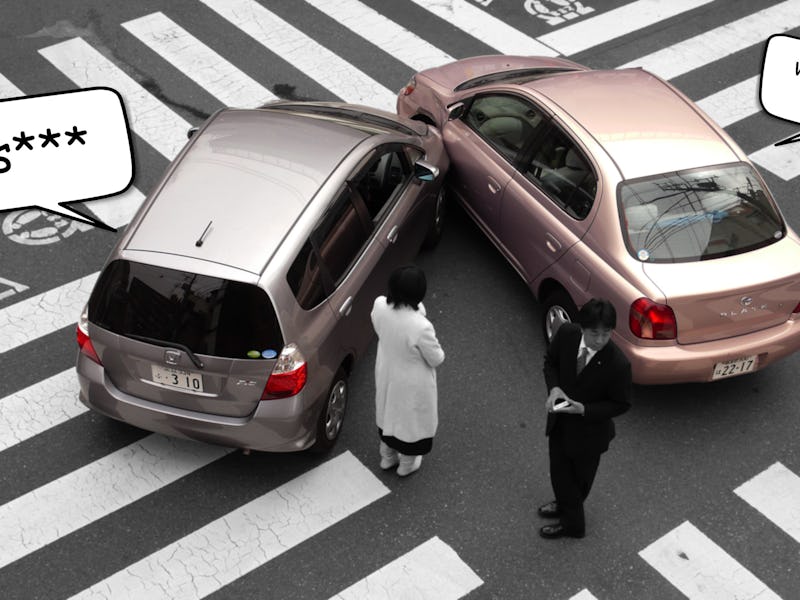If you own a car, and have blessed it with a name, there’s a decent chance you occasionally talk to your car, and a great chance it doesn’t talk back. But cars can “talk,” in a sense. They can tell you when to check their engines, or when the gas tank is low, or when they’re overheating. Now, the United States Department of Transportation wants them to talk to each other.
On Tuesday, the U.S. DoT announced the regulation proposals, which it believes will help reduce the frequency of car crashes. The U.S. DoT wants “vehicle-to-vehicle (V2V) communication technology on all new light-duty vehicles.” If all cars had this technology, there would presumably be almost no car accidents: Each car would understand where others were, what actions their drivers were taking, when there were slowdowns or hazards up ahead, and so on.
So when could this happen? “Assuming a final rule is issued in 2019, this would mean that the phase-in period would begin in 2021, and all vehicles subject to that final rule would be required to comply in 2023,” reads the proposal.
With a Trump presidency looming, regulation ideas like this might not have much of a chance of passing, but that doesn’t mean they wouldn’t be effective. Namely, they’d prevent traffic fatalities, says National Highway Traffic Safety Administration Administrator Mark Rosekind.
“Advanced vehicle technologies may well prove to be the silver bullet in saving lives on our roadways,” Rosekind says. “V2V and automated vehicle technologies each hold great potential to make our roads safer, and when combined, their potential is untold.”
Here’s how the technology works:
V2V devices would use the dedicated short range communications to transmit data, such as location, direction and speed, to nearby vehicles. That data would be updated and broadcast up to 10 times per second to nearby vehicles, and using that information, V2V-equipped vehicles can identify risks and provide warnings to drivers to avoid imminent crashes.
So when could this happen? The DoT regulation proposal announced on Tuesday is open for comment for 90 days.
Some cars today employ driver assistance, which means they’re partially autonomous. If a driver is distracted, and closing in on a crash, the car will react in the driver’s stead — the car will slow down or stop or engage in some avoidance maneuver.
Manufacturing cars that can effectively communicate with one another is the next logical step in road safety and would apply to all new cars — not just cars with partial or full autonomy. If this system is to be effective, it must be applied with a broad stroke: Too many uncommunicative cars and it all breaks down.
There are some exciting applications and some not-so-exciting applications. In the former camp: V2V-equipped cars could enable Vehicle-to-Infrastructure communications, which would “allow vehicles to ‘talk’ to infrastructure such as traffic lights, stop signs and work zones to improve mobility, reduce congestion and improve safety.” V2V and V2I together “could eliminate or mitigate the severity of up to 80 percent of non-impaired crashes,” the DoT promises.
Essentially, your car would know more about its surroundings than you.
Autonomous cars, like Teslas, could also stand to benefit: Right now, they must rely on computer vision and radar to understand their surroundings, but a new data stream from the V2V system would make them smarter yet.
The system communicates cars’ locations, paths, speeds, and so on, to nearby cars. That’s what makes them capable of saving lives, but also what could constitute the not-so-exciting applications: For starters, police officers would be able to issue speeding tickets in their pajamas by checking these data. Car hacking would be another concern: If a hacker could interfere with these communications, he or she could wreak havoc.
DoT, though, claims that the data would remain private and secure.
